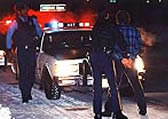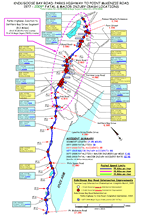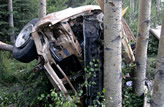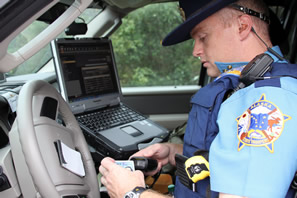Safety Topics
 Photo courtesy of Ofc. Pete Steen, BHP/AST Alaska Drug Evaluation and Classification Program |
 Alaska State Troopers make a DUI Arrest. Photo courtesy of the Alaska State Troopers. DUI Information & Impaired Driving Sections on: |
 Changing old child protection seats for new at the 1st AK Child Passenger Safety Conference in Anchorage, celebrating Booster Seat Awareness Week, 2008. Photo by Gordon Glaser. Occupant Protection |
 Safety Corridors |
 Colony High School Students pose at the Muir Woods National Monument. Photo Courtesy of Colony High School. Teen Driving in Alaska |
 A teen driver applies make-up and talks while driving Distracted Driving |
 Photo courtesy of the Alaska State Troopers. Fatality Analysis Reporting System (FARS) |
 A man poses for a NHTSA driving ad Senior Driving in Alaska |
 Scanning a Driver's License to auto-populate to a computer form. Photo courtesy of the Alaska State Troopers. Traffic Records Program
|
